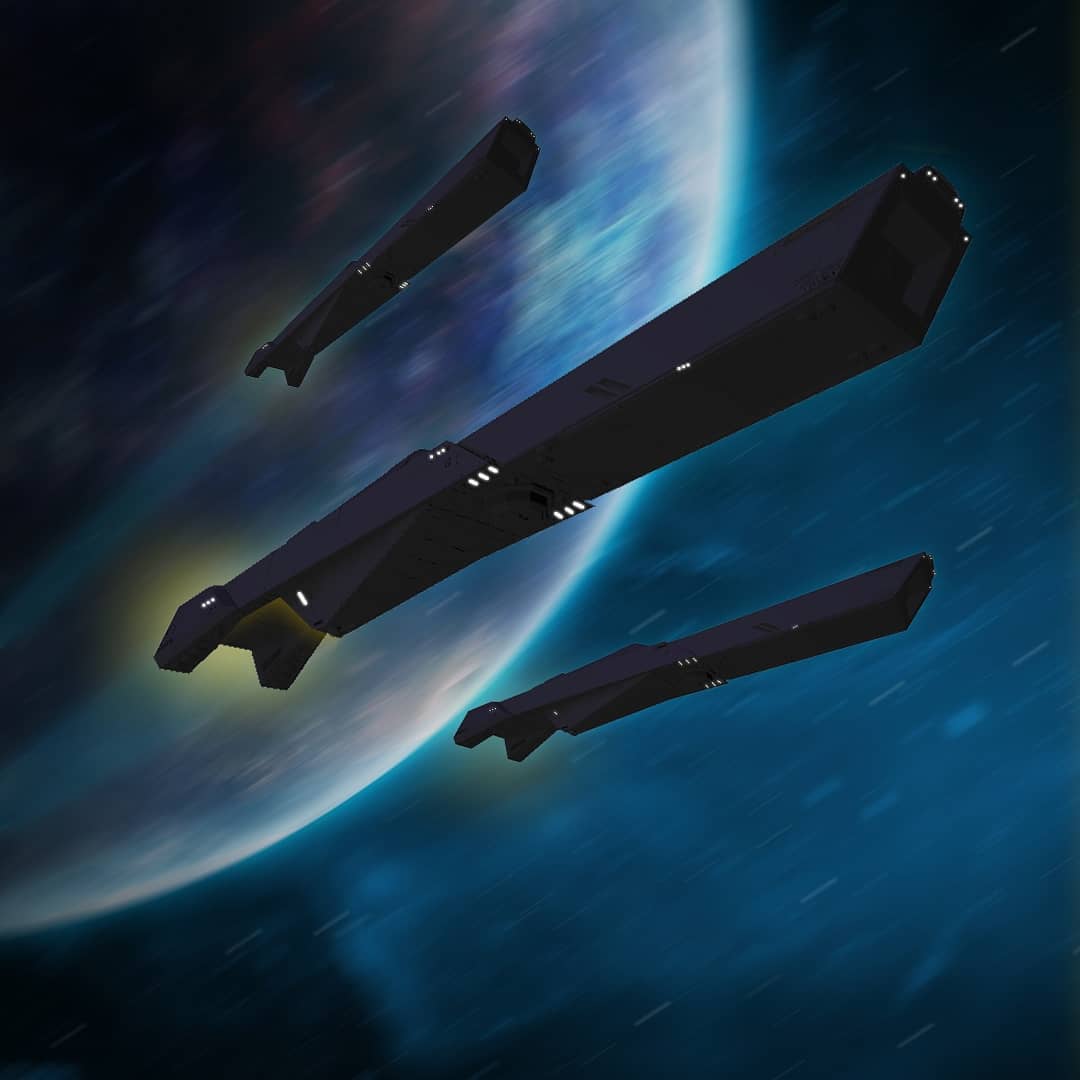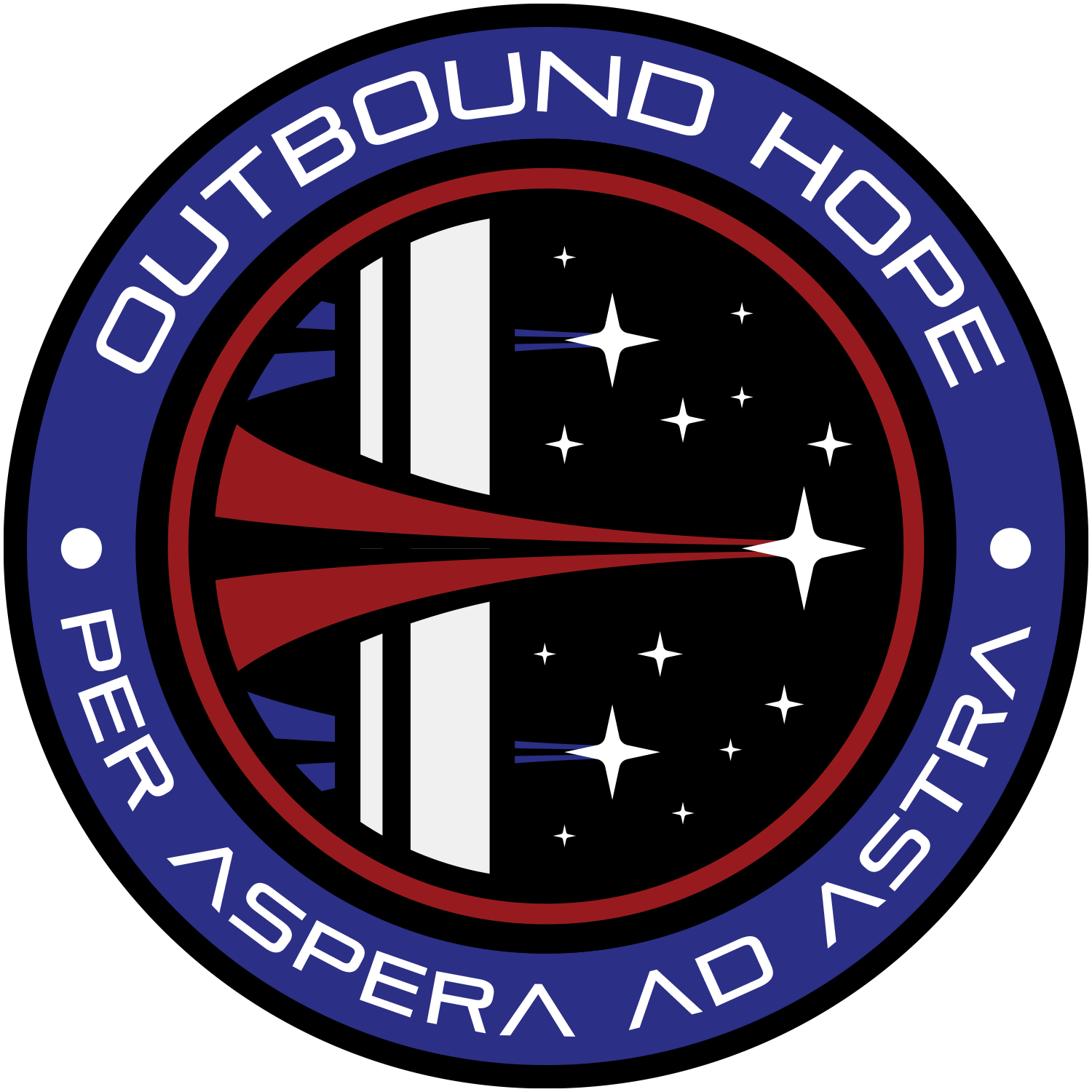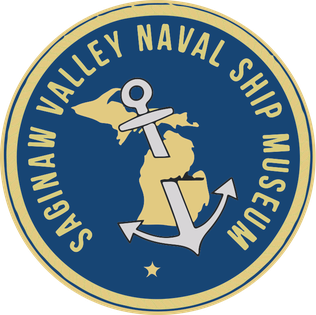The Solar War
The discovery of the Bifröst Station brought two decades of colonial tension to an immediate head. As European agencies attempted to establish a treaty recognizing the station as a neutral zone, other powers disagreed.
THE US SEIZES THE BIFRÖST
American ships – employing gravitational drives that gave them significantly more speed than traditional AIE drives – were the first to join the Europeans at the station. US holdings on Titan and Enceladus had proven lackluster and the opportunity for new colonial ventures was valuable incentive. Wanting to preserve the scientific and apolitical nature of the station, the Europeans refused the Americans and attempted to maneuver what few ships were present into a blockade around the ring. The effort proved futile and the outgunned Europeans ultimately backed down.
The United States Space Command (USSC) quickly seized control of the Bifröst Station, towing in a cadre of orbital railgun stations to protect it. US ships maneuvered into a defensive position as American leaders plotted their next course of action. Transportation through the ring was prohibited until further instructions were given. The US President declared control of the station to be “a great step for the American people,” but other nations saw it as an unnecessary and indefensible act of aggression.
Two weeks later, a massive fleet of Chinese battleships arrived at the ring. Vowing to back the Europeans, they demanded the United States stand down. Expecting reinforcements, the American forces refused. After three days of inaction, the Chinese opened fire.
“American forces, you are ordered to disengage and move away from the station.”
“Who’s going to make us?”
OFFICIAL EXCHANGE between Chinese and American vessels
The resulting battle was swift and devastating for the American defenses. At one point in the skirmish, a Chinese missile was knocked aside by an American drone and sent directly towards the Bifröst. Both fleets held their collective breaths as the missile detonated – only to find the station perfectly intact. Taking only minor losses, the Chinese eventually claimed victory. The crippled American ships limped back to the orbital base at Titan, but refused to back down. After regrouping they would return.
THE SOLAR WAR BEGINS
The confrontations and campaigns of the following two years are collectively known as the Solar War (2160-2162). With fronts and participants around the Sol System, many historians have compared the experience to the World Wars of the early 20th century on an interplanetary scale. Nearly every major power was dragged into the conflict, with most opting to side against what was widely seen as a rekindling of American imperialism. The Russian Alliance and, perhaps surprisingly, the Martian Collective both sided with the Americans, wary of Chinese motives.
In the early months of the war, the United States fell victim to this dangerous lack of allies. Yet one clear advantage remained: With the exception of the Chinese fleet, most major powers drew their warships directly from Windfall Starship Systems. Now in the thick of conflict, the corporation itself became a devastating weapon.
With intense knowledge of its own systems, Windfall engineered a serious of debilitating digital viruses to attack the computerized systems of the enemy vessels. While some navies caught wind of the plan before it could be capitalized on, the advantage proved invaluable. In at least three engagements – The Siege of Ceres, the Battle of Eres, and the Battle of Europa – opposition was completely disabled before US forces even fired a shot.
The Chinese Navy was another matter entirely. Producing their own warships at the Jinxing Platform over Venus, the Chinese had no dependencies on Windfall products. While Chinese ships were generally slower than those that Windfall produced, the armor and armaments were far more intimidating. Despite American victories over India, USAN, and the Arab League, Chinese ships tore through American navies.
NEW WEAPONS OF WAR
Attempting to counter these losses, Windfall released two new weapons into USSC forces. The first was a massive warship bigger than any in history: The New Liberty Dreadnought. Nearly a kilometer long and armed to the teeth, the New Liberty carried the same destructive capacity as the entire US arsenal at the height of the Cold War. As the new flagship of the USSC, the dreadnought was a commanding presence – but notoriously slow.
Solving this problem was a second design: The Roosevelt-Class Destroyer. Though only a sixth of the New Liberty’s size, twelve newly-constructed Roosevelt ships were outfitted with state-of-the-art gravitational drives that propelled them far faster than traditional ion drives. Together, the USSC believed it now had the firepower and maneuverability to counter the Chinese war machine.

Small and unassuming, the Roosevelt ships packed formidable firepower into a sleek and maneuverable package that benefitted from one of the largest gravitational drives ever used on a ship of its class. Its real value, though, was its Linear Skip Drive (LSD), which allowed the vessels to move instantaneously through short distances of space.
Though most information on the “skip drive” remains classified to this day, it is known to be the brainchild of theoretical physicist Dr. Adelaide Bennett and starship engineer Elijah Parker with the support of the Windfall Starship Systems.
No longer permitted by international treaties, the use of the drive is thought to be the cause of a number of mysterious and devastating phenomena that afflicted crew members and entire ships at both the Battle of Titan and throughout initial testing.
THE BATTLE OF TITAN
With little left of their allies, the Chinese and American forces met for a final battle above Titan in August of 2162.
Chinese forces launched a massive campaign to wipe out the Titian naval base but American forces stood firm. Hundreds of ships met in a battle that would ultimately define the war and would later be described as an “Orbital Armageddon.”
In a flurry on nuclear detonations and cannon volleys, nearly twenty percent of the participating ships were destroyed in the first twenty minutes. The New Liberty held her own while the dozen Roosevelt Destroyers revealed their well-kept secret: A new propulsion drive, which would quickly prove to be just as devastating to modern space warfare as the Manhattan Project had been two hundred years before.
The Roosevelts appeared to “skip through space like a stone on pond,” disappearing just before missiles would impact their hulls and reappearing a short distance away. While the destroyers could not stand and defend, they were able to make dagger strikes inside the Chinese lines and escape before retaliation reached them. The vessels needed only to stop and change direction before “skipping” again within minutes.

Fast and maneuverable, the Roosevelt-Class destroyers proved virtually invincible against Chinese weapons systems but not, it would seem, to their own abilities.

Assuming a new form of stealth technology, the Chinese tacticians scrambled to find solutions, attempting to hit the ships by projecting where the Roosevelts would go next and firing between the visible “skips.” The act proved useless – it was as if the ships simply disappeared before reappearing further along their line.
Three Roosevelts were eventually destroyed, but no record of Chinese weapon strikes accompanied those losses. Witnesses reported that it was as if the three ill-fated destroyers had detonated from within or simply broken apart. Despite this stunning secret weapon, the Americans could not escape the fact that they were still vastly outnumbered and outgunned.
Ultimately, the Liberty’s size proved to be her undoing. With such a sizeable hull, the ship made for an easy target. Six hours into the battle, a near-continuous enemy barrage had collapsed the ship’s defenses. The engines soon ruptured and a nuclear missile terminated the dreadnought’s command bridge – and the entire high command of the fleet. Leaderless and facing heavy casualties, the American ships turned to flee, hoping to find safety in Titan’s orbital defenses.
THE TIDE TURNS
But one ship did not back down and flee with the others. As the fleet fell into retreat, Captain Miles Edson of the ninth Roosevelt — the Ascendant Dawn — ordered his ship forward. Engaging the new drive, the Dawn‘s captain suddenly put himself within range of the amassed Chinese ships.
The Chinese were not his target, however. Instead, Edson sacrificed the remains of the Liberty. Targeting the ship’s now-fragile reactor, the Dawn emptied its magazines into the Liberty from point-blank range and detonated the flagship in a colossal explosion of gamma radiation. The forward sensors of the Chinese fleet were overwhelmed by the radiation, blinding the fleet and leaving them adrift on their own momentum. Some were sent on a collision course with Titan’s atmosphere, while others careened into massive pieces of debris. By the time of the explosion, the Ascendant Dawn was already a comfortable distance away.
In that moment, the other eight Roosevelts skipped back into the flight. With the Chinese ships still blind and unable to enact any countermeasures, the new destroyers began to pick off the enemy vessels with the greatest remaining sensor capacity. In a stunning reversal, the Chinese fleet collapsed with almost no hope of retreat. One-by-one their ships were destroyed, with collisions claiming as many victories as American guns. In the final hours of the battle, two more Roosevelts were destroyed through no action of the enemy; Once more they seemed to simply “come apart.”
In one, bold maneuver, Miles Edson and the Roosevelt task group had saved the American fleet and crippled the Chinese. Lesser Chinese fleets scattered across the solar system began to pull back into defensive positions around their scattered colonies. Less than a month later, the Chinese offered a surrender, and the Solar War drew to a sudden close.
AFTERMATH OF THE WAR
Miles Edson was seen as an American hero while the Ascendant Dawn instantly became a national icon and symbol of victory. The culminating Treaty of Titan (2162) outlined the armistice terms limiting interplanetary warfare in the Sol System, and demanded the recognition of the Bifröst Station as an exclusive claim of the USSC.
In exchange, the American military agreed to cease development and classify all records pertaining to the previously unknown “Linear Skip Drive” mounted to the Roosevelt destroyers. The technology had given new potential to space warfare, and its possible uses terrified the various factions of the solar system. Even the Russians and Martians — allied to the United States in the Solar War — demanded the retirement of the technology.
With the Bifröst Station now firmly under their control, American leaders turned their eyes to the opportunities that awaited them on the other side of the gate, and prepared a major operation to capitalize on them.



